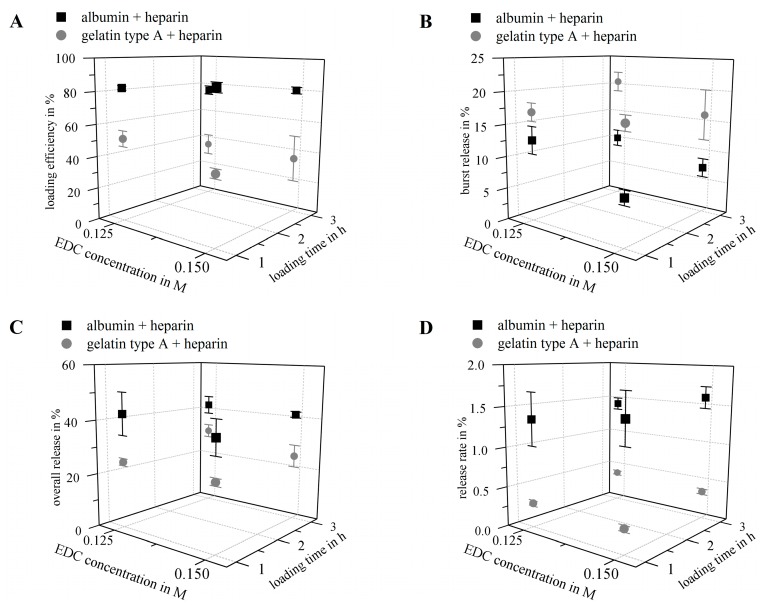Figure 7.
Results of key parameters for the release properties. Hydrogels were prepared with gelatin type A (10 wt %) or albumin (10 wt %) and heparin (1 wt %). For each composition, two EDC concentrations (0.125 M and 0.15 M) were used and hydrogels were loaded by swelling for 1 or 3 h in VEGF solution (1 µg VEGF per mL; loading with 0.1 µg VEGF per mg hydrogel dry weight). VEGF concentrations were normalized to the total VEGF amount used for hydrogel loading (n = 3). (A) Loading efficiency: albumin hydrogels had a higher loading efficiency compared to gelatin type A hydrogels (p < 0.001). For both hydrogel types the loading efficiency showed a negative correlation with the loading time (p < 0.01); (B) Burst release (release within 24 h): gelatin type A hydrogels had a higher burst release compared to albumin gels (p < 0.001). For albumin hydrogels, crosslinker concentration showed a negative correlation with the burst release (p < 0.01); (C) Cumulative overall release after 21 days: was higher for albumin gels compared to gelatin gels (p < 0.001); (D) Average release rate between day 7 and day 21: release rates of all albumin gels were significantly higher compared to the corresponding gelatin type A-based gel (p < 0.001).

